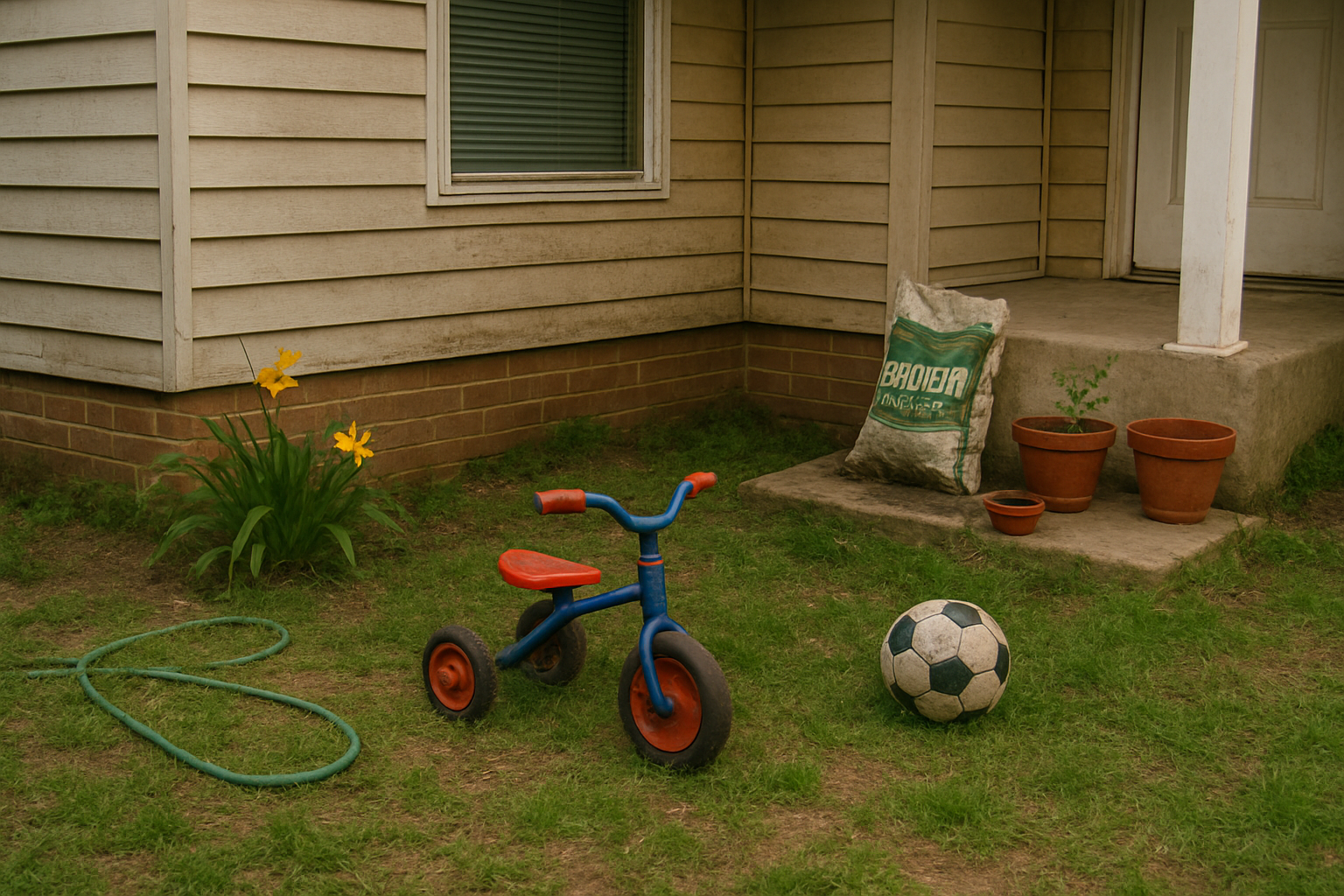Texas Crime Rates 2025: Is Texas Safe and How to Protect Your Home
As we move through 2025, the Lone Star State continues to attract new residents with its vibrant culture and economic opportunities. But for anyone living in or moving to Texas, the question of safety remains paramount. So, is Texas safe in 2025?
The answer is nuanced. While state-level statistics provide a broad overview, the true story of safety in Texas is told in the data of its individual cities. This comprehensive 2025 guide analyzes the latest crime statistics, explores trends in major metropolitan areas, and provides clear, actionable steps to secure your Texas home.
Key Takeaways: Texas Crime in 2025 (TL;DR)
Here’s a snapshot of what we know about Texas crime in 2025, based on the most current data:
Overall Crime Trend: Texas continues a decade-long trend of decreasing crime, but its rates for both violent and property crime remain slightly above the U.S. national average.
Violent Crime Rate: The Texas violent crime rate is approximately 4.7 crimes per 1,000 residents.
Property Crime Rate: The Texas property crime rate is approximately 28.4 crimes per 1,000 residents. Vehicle theft and package theft are notable concerns in urban centers.
City-by-City Variation: Crime is highly localized. The safety landscape in major cities like Houston and San Antonio is vastly different from that of smaller suburban towns like Fulshear or Colleyville.
Texas Crime Rate vs. National Average (2025)
Texas Crime Rate vs. National Average
Here’s how Texas compares to the national benchmark in 2025, based on the latest full-year data per 1,000 residents.
Violent Crime
Property Crime
These statewide averages are heavily influenced by high-population areas. Many regions in Texas boast safety records that are significantly better than the national average.
A Closer Look: Crime Rates in Major Texas Cities (2025)
Most people searching for "Texas crime rate" really want to know what's happening in their city. Here’s a breakdown for 2025 using the latest available statistics.
Houston Crime Rate 2025
As Texas's largest city, Houston has ongoing safety initiatives to combat crime. However, property crime, especially vehicle break-ins and package theft from doorsteps, continues to be a primary concern for residents.
Violent Crime Rate: Approximately 6.3 per 1,000 residents
Property Crime Rate: Approximately 31.2 per 1,000 residents
Local Concern: Porch piracy is a year-round issue that spikes during holiday seasons.
Kangaroo Solution: A Video Doorbell Camera is an essential tool for Houstonians. It acts as a powerful deterrent and allows you to monitor your front porch in real-time, ensuring your packages are protected.
Dallas Crime Rate 2025
Dallas has made strides in reducing violent crime, but property crime remains a challenge. Home burglaries and larceny-theft are the most commonly reported property offenses.
Violent Crime Rate: Approximately 5.8 per 1,000 residents
Property Crime Rate: Approximately 28.9 per 1,000 residents
Local Concern: Securing all potential home entry points is crucial.
Kangaroo Solution: The Kangaroo Motion + Entry Sensor kit provides an affordable, easy-to-install layer of security. Receive instant smartphone alerts the moment a secured door or window is opened.
San Antonio Crime Rate 2025
San Antonio's crime data mirrors that of other large Texas cities, with property crime being the more significant threat for the average resident. Crime rates tend to decrease in neighborhoods farther from the urban core.
Violent Crime Rate: Approximately 6.1 per 1,000 residents
Property Crime Rate: Approximately 30.5 per 1,000 residents
Local Concern: Monitoring outdoor areas like driveways, yards, and side entrances.
Kangaroo Solution: Install an Outdoor Security Camera with night vision to get a clear view of your property's perimeter 24/7, providing peace of mind and deterring potential trespassers.
Austin Crime Rate 2025
While Austin maintains a lower violent crime rate than other major Texas hubs, its explosive population growth has contributed to a rise in property crime rates.
Violent Crime Rate: Approximately 4.5 per 1,000 residents
Property Crime Rate: Approximately 25.3 per 1,000 residents
Local Concern: Protecting valuables from theft, both from inside homes and vehicles.
Kangaroo Solution: For ultimate protection, the Kangaroo Complete Protect Plan offers comprehensive professional monitoring and includes a unique benefit: theft and damage reimbursement for a financial safety net.
El Paso Crime Rate 2025
El Paso continues its long-standing reputation as one of the safest large cities in the United States. Its crime rates are consistently well below both state and national averages.
Violent Crime Rate: Approximately 3.4 per 1,000 residents
Property Crime Rate: Approximately 15.1 per 1,000 residents
Local Concern: Maintaining high safety standards through proactive prevention.
Kangaroo Solution: Even in the safest cities, smart home security adds convenience and peace of mind. A simple Indoor Security Camera is perfect for checking on pets or family while you're away.
The 10 Safest and Most Dangerous Cities in Texas (2025)
The 10 Safest Cities in Texas (2025)
These communities exemplify safety through low crime rates and active community involvement.
- Fulshear
- Fair Oaks Ranch
- Trophy Club
- Colleyville
- Sunnyvale
- Fate
- Murphy
- Prosper
- Horizon City
- Fairview
The 10 Most Dangerous Cities in Texas (2025)
These cities report the highest per-capita crime rates, often concentrated in specific areas.
- Houston
- Bellmead
- Lubbock
- San Antonio
- Beaumont
- Dallas
- Amarillo
- Mesquite
- Corpus Christi
- Texarkana
Crimes Texans Worry About Most
Surveys consistently reveal that Texans share these primary safety concerns:
| Category | Concerns |
|---|---|
| Property Crimes |
- Home invasions while residents are present or away - Theft of vehicles or belongings from vehicles - Package theft, especially around the holidays - Opportunistic theft in seemingly safe neighborhoods |
| Violent Crime |
- News reports of violent crimes can stoke fears, even if the overall risk is low - Concerns about personal safety in public spaces, especially at night or in certain areas - Worry about the impact of potential mass shootings on Texas communities |
| Border-Related Crime |
- Human and drug trafficking can negatively impact surrounding communities - Property crimes linked to illegal border crossings - Heightened public discourse and political tensions surrounding border security |
Safety Beyond Statistics: Protecting Your Texas Home
Understanding the data is the first step; taking action is what truly keeps you safe. Here’s how to secure your home.
1. Reinforce Your First Line of Defense
Your doors and windows are critical. Use strong deadbolts, and ensure all locks are functional. The most important entry point is your front door. A Kangaroo Video Doorbell not only lets you see who's there but actively deters thieves looking for an easy target.
2. Embrace Smart, Affordable Security
Effective home security in 2025 is accessible to everyone. Kangaroo is built for modern life:
Simple DIY Setup: Install your entire system in minutes with no tools required. It's perfect for both homeowners and renters.
Budget-Friendly Plans: Get professional monitoring and premium features for less than the cost of a few cups of coffee a month.
Theft & Damage Reimbursement: Our premium plans can reimburse you up to $1,000 in the event of theft or damage. It's security that truly has your back.
Control from Anywhere: Use the Kangaroo app on your smartphone to monitor your home, receive alerts, and see live video feeds.
PERFECT EQUIPMENT: "Very nice and perfectly working. I and my family feel safe. Thank you" - Clary, Kangaroo Customer
3. Perform a Home Security Audit
Think like a potential intruder. Walk your property and look for vulnerabilities. Are there overgrown bushes near windows? Is the side gate unlocked? Are tools or ladders easily accessible? Eliminating these opportunities is a free and powerful security upgrade.
4. Build a Community Network
A connected neighborhood is a deterrent. Join a local social media group or a formal Neighborhood Watch program. Simply knowing your neighbors and looking out for one another creates a safer environment for everyone.
Why Choose Kangaroo?
Easy Installation: Kangaroo’s DIY systems are simple to install, making it perfect for homeowners and renters alike.
Comprehensive Security: From video doorbells to motion sensors, Kangaroo offers a variety of devices to secure entry points and monitor activity around your home.
Affordability: Kangaroo provides high-quality security without breaking the bank, offering plans that fit any budget.
Theft & Damage Reimbursement: With the Kangaroo Complete Protect Plan and Camera Protect Plan, you can even get reimbursed in case of theft or damage.
"its great to know i can always check who's at my door. so convenient!" - Junie, Chewy Customer
"Very nice and perfectly working. I and my family feel safe. Thank you" - Clary, Chewy Customer
"A dependable security placed in any corner of your house. A highly recommended kind of security camera to your friends.easy installation of app on your phone. Accessible wherever you go . You can track what is happening direct from your home .amazing product and the thing is cheaper than any other brand." - AquelisHub, BestBuy Verified Purchase
Smart Security for Peace of Mind
Consider integrating these Kangaroo devices into your home security setup:
Video Doorbell Camera: Monitor your front door in real-time, deter package theft, and record any suspicious activity.
Motion + Entry Sensors: Get instant alerts if someone enters your home without permission, even when you're away.
Indoor + Outdoor Security Cameras: Keep an eye on your property day and night, thanks to advanced motion detection and night vision features.
Whether you live in a bustling city like Houston or a quieter area, Kangaroo Home Security ensures your home is protected with smart technology and cost-effective solutions.
Inside Tips
Home Security System: A comprehensive system with monitored alarms deters crime effectively.
Don't be an Easy Target: Never leave valuables in plain sight, even in your car. Secure windows when you leave.
Inventory Your Valuables: Document possessions with photos or lists for insurance purposes in case of burglary/theft.
Beyond Your Walls: Community Safety
Neighborhood Watch: These programs foster communication and alertness, reducing opportunities for crime.
Know Your Neighbors: A strong community network can provide extra eyes and ears to keep your neighborhood safe.
City Resources: Check your city's website for crime prevention tips, safety programs, and police contact information.
Texas Crime FAQ (2025)
-
No. While certain urban areas have higher crime rates, Texas as a whole is a safe state to live in. Safety is highly dependent on the specific city and even the neighborhood.
-
According to the latest data, Dallas has a marginally lower violent crime rate, but both cities face similar challenges with property crime. Safety can vary significantly by neighborhood in both cities.
-
Based on consistent FBI data, El Paso remains the safest large city (over 500,000 population) in Texas. For fast-growing suburban cities, places like Frisco and Plano are recognized for their low crime rates.
The Takeaway: Securing Your Texas Home
Don't let crime statistics make you feel anxious. By understanding the specific safety landscape of your area and taking smart, proactive measures, you can create a secure home for yourself and your loved ones.
Investing in an affordable security solution like Kangaroo Home Security, staying aware of your surroundings, and fostering community ties are the most effective ways to ensure your safety. With the right precautions, you can confidently enjoy everything the great state of Texas has to offer.
Disclaimer: Crime statistics are dynamic. The data presented in this 2025 guide is based on the latest available full-year reports from the FBI Uniform Crime Reporting (UCR) Program and the Texas Department of Public Safety. For real-time information, please consult your local law enforcement agency.









![[QUIZ] What's Your Home's True Security Vulnerability Score?](https://images.squarespace-cdn.com/content/v1/6047adb1f3383c71b64f494b/7b99bd74-f07d-42ae-a096-72ee222bde79/IMG_4306.jpg)















Think more cameras mean more safety? Discover 3 ways an over-secured home can attract burglars and learn why smart, discreet security is the better choice.